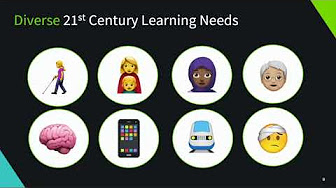Understanding Diverse Needs
Things to think about:
Someone with a visual disability . . .
| |
Someone with a physical disability . . .
|
Someone with a hearing disability . . .
|
Someone with a cognitive disability . . .
|
"Inclusive Classrooms: A Strategy and Framework.” Blackboard Help, help.blackboard.com/Accessibility/Inclusive_Classrooms.
Universal Design for Learning (UDL)
- Universal Design for Learning (UDL) is a way of thinking about teaching and learning that helps give all students an opportunity to succeed.
- This approach offers flexibility in the ways students access material, engage with it and show what they know.
- Developing course materials and lesson plans this way helps all students, but it may be especially helpful for students with learning and thinking differences.
The goal of UDL is to use a variety of teaching methods to remove any barriers to learning and give all students equal opportunities. It's about building in flexibility that can be adjusted for every student's strengths and needs. UDL benefits all students.
Examples:
- Closed captioning on videos allows people with hearing impairments to read the audio text on screen; however, closed captions can also help students view videos in a noisy environment or avoid disturbing others around them.
- Alternative formats for documents allow students to access those documents in the format best suited for their needs; however, an alternative format can also allow anyone to read the document on a mobile device small screen.
- Allowing students to choose between taking a paper-and-pencil exam, doing a group project or giving an in-class presentation to show what they've learned lets students choose the method that best demonstrates their learning strengths.
Adapted from "Universal Design for Learning (UDL): What You Need to Know", Amanda Morin, https://www.understood.org/en/learning-thinking-differences/treatments-approaches/educational-strategies/universal-design-for-learning-what-it-is-and-how-it-works
Supporting Diverse 21st Century Learners through UDL
An excellent 5-part video series recorded during the Fall 2019 Ally Road Tour
Used with permission from Dr. John Scott, Blackboard Ally Product Manager



